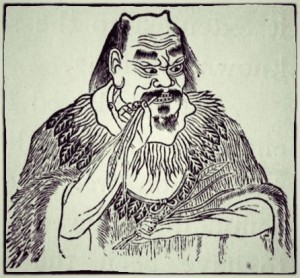| Area | This Area Reflects | This Area is Treated By | This Area Treats |
|
T1 |
treats tail bone injury |
||
|
T2 – T6 |
Shen (on the Du) |
opens up ANS (especially T5) |
|
|
T2 – right |
G.B. |
G.B. |
|
|
T3 – T6 |
for breast issues – |
||
|
T3 – T5 |
treat for neck (esp. C3) also treats face |
||
|
T3 |
top of head (if bumped) |
||
|
T4 |
eyes (especially tears) |
||
|
T3 – T5 – left |
Heart |
Heart |
|
|
T5 |
Shen |
HT7 |
|
|
T10 – right |
G.B. |
G.B. |
|
|
T11, T12 |
Sugar |
Sugar |
|
|
L1 |
inguinal |
||
|
L2 |
ears |
||
|
L3 |
hip joint, G.B. channel |
||
|
L4-L5-S1 |
pelvic shift |
sacro-iliac joint SP9, or Kidney G.B.26 |
|
|
G.B.21 (top) |
Wood Invading Earth |
SP9 |
|
|
G.B.21 (behind) |
ST5, 6, 7 |
TMJ (ST5, 6, 7) |
|
|
U.B.11 |
bones in face/head, teeth, TMJ |
||
|
S.I.13 |
Pituitary |
bladder |
|
|
Under Scapular Spine |
Lungs/Immunity |
||
|
S.I.11 |
breast |
||
|
S.I.11 (right) |
G.B. |
G.B. |
|
|
S.I.11 (left) |
Heart |
U.B.27, Under-2nd-Toe |
moxa for cardiac patients |
|
S.I.9, S.I.10 area |
Blood Pressure |
blood pressure |
|
|
U.B.13-15, 42-45 |
if both sides – Lungs |
S.J.1, 2, S.I.9, 10 |
needle and moxa any areas that are left after releasing via remote points – for Lung and Heart conditions |
|
UB43 |
Liver (especially on right), possibly thyroid or fat metabolism probelm |
LV1 |
|
|
UB17 |
Stagnant Blood |
UB35 (left is more important) |
Stagnant Blood |
|
Asthma Shu |
Asthma, Insomnia, ANS disorders | ||
|
UB17, 18 (right) |
Liver | left UB35 | needle after releasing via UB35 |
|
Mid-back UB20-21 |
Sugar/Spleen | SP3.2/SP4
Sugar Points (T11-T12) |
Hamstrings |
|
Quadratus Lumborum |
Kidney Deficiency | Huakaya LU10 (moxa) | |
|
Under Iliac Crest |
Immunity | Immune (TI10-11)
SJ16 |
|
|
UB27 |
Cardiac with slow pulse | ||
|
UB32 |
Hormonal issues with light menses important in slow pulse type | ||
|
Piriformis |
Tightness may relate to infertility | Huakaya GB31 |
T1-T2 relates to the neck and face.
C7-T2 relates to lymphatic drainage.
DU14 is treated with moxa for external evil wind invasions. This is also the location of the thoracic duct, and has a tendency to increase oxygen and lymph flow, which sometimes causes dizziness for the patient.
T2-T4 relates to the facial nerve and treats forgetfulness. It is also a useful area for diagnosis and treatment of paralysis, bell’s palsy, and herpes zoster that affects the facial nerve.
T3-T4 relates to eye disorders, especially eye pain and strain.
T3-T5, especially on the left, relates to the cardaic reflex. When this area is sensitive, check the cardiac reflex points. This area is often indicated when shoulder pain on the left side is chronic and doesn’t resolve fully, and worsens with exertion like walking up stairs.
T5 is the spinal pivot. It reflects imbalance of upper and lower, and treats dizziness, balance problems, inner ear issues such as Meniere’s. This huatuojiaji point requires stronger stimulation than most. T5 is called ‘big heart’ and L2 is called ‘small heart’ or ‘mingmen’. These two areas are indicated in pain that relates to movement and alignment.
T5-T6 on the left reflects stomach problems.
T5-T7 huatuojiaji points are useful to treat neck and shoulder pain that is stress-related. In this case, you will find tight, rubbery points in the area, which should be treated with cross fiber and needle-head moxa to help release the neck and shoulder.
T6-T7 reflect any intestinal problems.
T6 on the right reflects oketsu.
T6-T9 on the right reflects liver disorders.
T7-T8 relates to the diaphragm.

